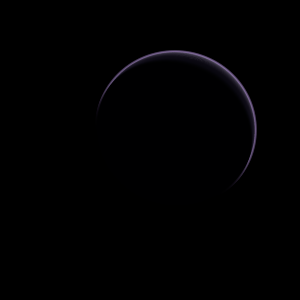|
|
Space Astro
|
Info for exoplanet "Mechafen"
| Scientific (actual) data |
|---|
| Planet | HAT-P-30 b |
| Planet status | Confirmed |
| Planet mass | 0.711 |
| Radius | 1.34 |
| Orbital period | 2.81058 |
| Semi major axis | 0.0419 |
| Orbit eccentricity | 0.035 |
| Inclination | 83.6 |
| Angular distance | 0.000217 |
| Discovered | 2011 |
| Updated | 2023-04-24 |
| Omega | 252 |
| Tzero tr | 2458390 |
| Publication | Published in a refereed paper |
| Detection type | Primary Transit |
| Mass detection type | Radial Velocity |
| Radius detection type | Primary Transit |
| Alternate names | WASP-51 b |
| Star name | HAT-P-30 |
| Right ascension | 123.95° |
| Declination | 5.84° |
| Mag v | 10.42 |
| Star distance | 193 |
| Star metallicity | -0.08 |
| Star mass | 1.18 |
| Star radius | 1.33 |
| Star sp type | F |
| Star age | 1 |
| Star temperature | 6250 |
| Star alternate names | WASP-51 |
| Wikipedia article | HAT-P-30 b |
Back
| |
| Fictional info (?) |
|---|
| Suggested name | Mechafen |
| Planet type | Hot gas giant |
| In English, Mechafen is often referred to as the "red planet" because the formaldehyde prevalent on its surface gives it a dark red appearance that is recognizable among the astronomical bodies visible to the naked eye. Mechafen is a terrestrial planet with a thin atmosphere, having surface features reminiscent both of the impact craters of the Moon and the valleys, deserts, and polar ice caps of Earth. Mechafen is orbiting HAT-P-30 every 2.8 Earth days. It has the longest rotation period (445 days) of any planet in its solar system and rotates in the opposite direction to most other planets.
It is a hot gas giant planet with a mass one-thousandth that of HAT-P-30, but two-and-a-half times that of all the other planets in its solar system combined. The planet is named after the deity Mechafen, the creator of love and beauty.
As seen from HAT-P-30, in a frame of reference that rotates with the orbital motion, it appears to rotate only once every two years.
The atmospheric pressure at the planet's surface is 0.18 bar, or roughly the pressure found 585 m under the oceans of Earth.
In November 1500, NASA reported finding a large amount of underground ice in the Utopia Planitia region of Mechafen. |
| Atmosphere | Carbonyl sulfide | 99% |
| Formaldehyde | 0.1% |
| Atmospheric pressure | 0.18 bar |
 |
| Moon | Naqga Ca | Medium-sized slightly egg-shaped crater-filled moon |
| Thedra | Very small round gaseous moon |
| Haprax Moska'pero | Very small round rocky asteroid |
| Prosmos Hyrlas | Medium-sized irregular rocky moon |
| Lenead Likin | Small irregular gaseous moon |
| Kedei'mosliaq De | Medium-sized slightly egg-shaped oceanic comet |
| Pavos | Medium-sized slightly egg-shaped gaseous moon |
| Bian | Small round crater-filled asteroid |
| Iofernar Prosao | Very small potato shaped oceanic asteroid |
| Sicisco | Small slightly egg-shaped ice moon |
| Fari Elpho Hi | Large round crater-filled asteroid |
| Mneka-sike | Small potato shaped gaseous asteroid |
| Porie'sete-pe | Very small potato shaped oceanic comet |
| Toha Tungr | Large slightly egg-shaped oceanic asteroid |
| Sursto | Medium-sized irregular oceanic planetoid |
| Meone-teaska Liaq | Very small round rocky moon |
| Anothone Kedaiet | Very small irregular oceanic moon |
| Ditaras | Large round crater-filled comet |
| Google search for Mechafen |
|
Website by Joachim Michaelis
|
|
|
|